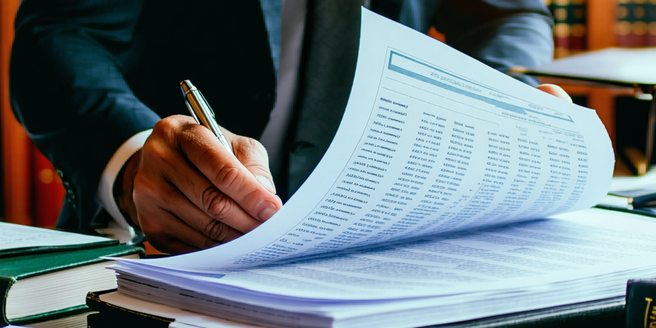
Understanding Class Action Lawsuits
| Component | Description | Examples |
| Lead Plaintiff | Represents the group | Consumer Claims |
| Defendant | Party being sued | Corporation |
| Class Certification | Court approval needed | Prerequisite |
| Discovery | Evidence gathering | Documents/Emails |
| Settlement | Resolution out of court | Financial Compensation |
| Trial | Court hearing | Jury Decision |
The Evolution of Class Action Litigation
The history of class action litigation is marked by significant developments and changes in legal frameworks and public perception. In its early days, class actions were primarily seen as instruments for addressing issues of social justice, often used against corporations suspected of consumer exploitation or environmental harm. Over the years, with the rise of complex industrial operations and corporate entities, class actions have become more nuanced. Legal precedents set in various jurisdictions have subtly transformed class actions into powerful tools that demand accountability and transparency from large organizations. In recent decades, technological advancements have played a crucial role in evolving the legal processes involved in class actions, allowing for more efficient communication and documentation. As the dynamics of class action litigation continue to evolve, legal professionals are forced to adapt to new methods, while constantly preparing for emerging trends in this challenging and intriguing aspect of law.
Key Players in Class Action Seasons
Class action seasons involve various important stakeholders who each play distinct roles in the litigation process. First among these are the plaintiffs, typically representing a group of individuals who have suffered harm or injustice. The lead plaintiff acts as a figurehead for the group and is crucial in representing shared interests in court proceedings. On the opposite side stand the defendants, usually corporations or organizations accused of wrongdoing, who employ their legal teams to mitigate potential liabilities. The attorneys for both plaintiffs and defendants play pivotal roles, with the responsibility of navigating complex legal issues and advocating for their clients’ interests. Another key player is the judge, who serves as the arbitrator of legal proceedings, ensuring fair trial conditions are met and making critical decisions on matters like class certification. Together, these players create a dynamic and often contentious legal landscape, where each party seeks an outcome favorable to their goals.
Preparation: The First Step in Class Actions
The initial phase of a class action lawsuit is rooted in comprehensive preparation, laying the foundation for subsequent legal strategies. The preparation phase begins by identifying a potential class and articulating the alleged harm that unites individual claims into a class action. Lawyers involved in the case conduct meticulous research, gathering material evidence that substantiates the claims, while preparing to counter probable defenses from the opposing side. Marketing and communication strategies often accompany this stage, aimed at recruiting class members and increasing awareness about the case. During this period, thorough analysis is conducted to evaluate the likelihood of achieving class certification, review statutory and case law, and understand the potential outcomes of the lawsuit. Successful preparation can significantly influence the trajectory of a class action by establishing a strong basis for negotiations, settlement talks, and, if necessary, trial proceedings.
Filing a Class Action: Best Practices
Filing a class action requires adherence to certain meticulous best practices. Attorneys must initially ensure there is a well-defined class with common legal or factual claims. Before filing, conducting a thorough investigation of both the facts and applicable law is essential to assess the strength of the claims. The complaint must be detailed, effectively articulating the shared issues and demonstrating why a class action is the most appropriate vehicle for resolution. Being mindful of jurisdictional rules and ensuring compliance with procedural requirements is critical to avoid procedural dismissals. Lawyers should anticipate and be ready to counter defense strategies aimed at denying class certification. Finally, effective communication with potential class members is crucial for maintaining transparency and confidence as the class action progresses. By adhering to these best practices, legal practitioners can enhance their chances of success in what is often a complex litigation process.
Navigating the Discovery Phase
The discovery phase in class action lawsuits is a critical period where both sides gather and exchange key information to build their respective cases. This process involves the collection of documents, written questions known as interrogatories, and depositions of witnesses or experts. The discovery phase serves the purpose of uncovering evidence that can substantiate claims or defenses, potentially leading to the resolution of pretrial motions or facilitating settlements. For plaintiffs, a successful discovery phase can result in obtaining incriminating evidence that bolsters their case, while for defendants, exposing weaknesses in the plaintiff’s case can be equally beneficial. Lawyers on both sides engage in strategic planning, making requests for production and overcoming legal hurdles to access the necessary information. Transparency, cooperation, and a clear understanding of the rules governing discovery are crucial in ensuring that this phase proceeds efficiently, paving the way for potential settlement discussions or trial preparation.
Settlement vs. Trial: Making the Decision
Deciding whether to pursue settlement or proceed to trial is a pivotal moment for legal teams involved in class action lawsuits. Settlements offer a quicker and often less risky conclusion, providing compensation to class members without the uncertainty of a jury trial. However, settlement amounts may be lower than potential jury awards, and some plaintiffs may feel they compromise on justice by not holding defendants publicly accountable. Trials, on the other hand, offer the possibility of higher damages awards and have the impact of highlighting corporate malfeasance. Nevertheless, trials are costly, time-consuming, and carry the risk of losing the case entirely. Effective legal counsel weighs these pros and cons carefully, considering the strength of the evidence, potential outcomes, the client’s goals, and the broader social implications of the case. Each class action is unique, and the decision-making process must be tailored to address the specific circumstances and interests of the parties involved.
The Role of Judges in Class Actions
Judges play an integral role in class action lawsuits, serving as key decision-makers throughout the entire process. They are responsible for determining whether a suit meets the necessary criteria for class certification, a critical step in allowing the case to proceed as a class action. Judges also oversee the discovery process, ruling on motions related to evidence-gathering efforts from both parties. During settlement negotiations, the judge may be involved in approving proposed agreements to ensure they are fair, reasonable, and adequate for class members. Additionally, judges retain an influential role during trials, adjudicating on legal questions and instructing juries on their duties. Their decisions have significant ramifications, potentially affecting the case outcome and influencing future class action suits. The impartiality, expertise, and judgment of a judge are crucial components ensuring that the legal process is upheld, fairness is maintained, and justice is served.
Impact of Class Actions on Plaintiffs and Defendants
Class action lawsuits can have profound impacts on both plaintiffs and defendants. For plaintiffs, class actions provide an opportunity to collectively seek recourse for grievances that may have been unaffordable or impractical to pursue individually. Successfully litigated class actions can lead to meaningful compensation and can deter future misconduct. However, the lengthy timelines and complexity of class actions can also be a source of frustration for plaintiffs. On the other hand, defendants—often large corporations—face substantial financial risk and reputational damage when embroiled in class actions. These lawsuits can lead to costly settlements or trial outcomes and may necessitate operational or policy changes within the corporations to mitigate future lawsuits. Additionally, class actions can have industry-wide implications, shaping regulatory environments and prompting other entities to preemptively adjust practices. For all parties involved, class actions serve as an influential tool in upholding accountability and fostering justice.
Future Trends in Class Action Litigation
As we advance into the future, several emerging trends are poised to impact the landscape of class action litigation. Technological innovations play a pivotal role, with advancements in data analysis and electronic discovery streamlining legal proceedings and making evidence more accessible. Social media platforms are becoming essential tools for engaging class members and bringing awareness to litigation, greatly expanding the reach and efficacy of class actions. Furthermore, there’s a gradual shift towards participation in global class actions, reflecting the growing interconnectedness of international markets. Legislative and regulatory changes continue to evolve, with some jurisdictions enacting reforms aimed at increasing transparency and efficiency in class actions. Additionally, new areas of law, including data privacy and consumer protection legislation, are expected to become prominent grounds for class actions. As these dynamics unfold, legal practitioners must stay agile, embracing new technologies and adapting strategies to navigate the complexities of modern class action litigation.

